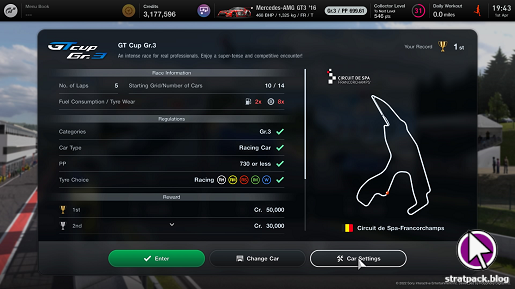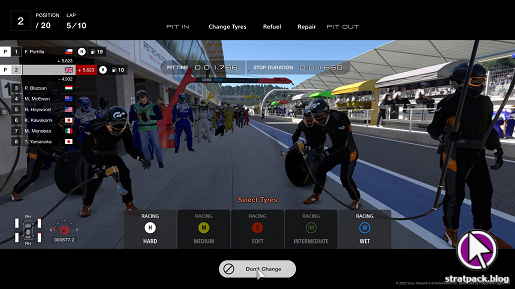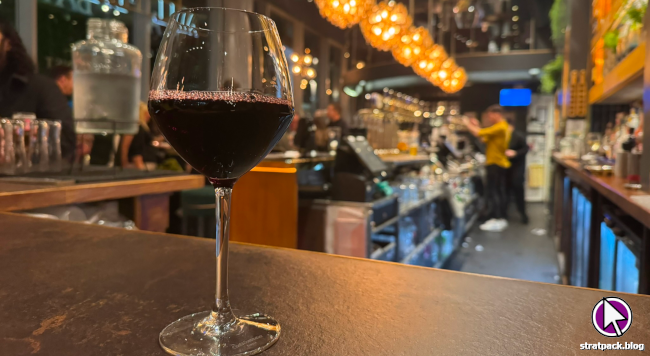
Gran Turismo 7: A guide to race strategy and pit stops
Gran Turismo 7’s strategy system is both a blessing and a curse. With everything handled during the race, you never reach the halfway mark and realise you forgot to configure it, but on the other hand it becomes difficult to plan ahead and you’re forced to make a lot of snap decisions.

Like many more subtle or advanced features, it’s also not terribly well explained by the game. Since managing your tyres and fuel becomes critically important once you get to the longer races towards the end of Gran Turismo 7, I thought I’d put together an article about what I’ve learnt through a combination of both general racing knowledge and trial and error.
Before the race
Your first step to strategic success is to check what tyre degradation and fuel consumption multipiers apply. Gran Turismo 7 simulates endurance races by having both progress more quickly in some events, so before making any estimates about how long you can go on particular compounds or a full tank of fuel, make sure you know what you’re dealing with.
Slightly oddly for a game that otherwise provides a decent range of strategy options, you must start with a full fuel tank. What you can choose, however, is your starting tyre compound. You need to have purchased each compound at GT Auto before it becomes available, and some races will bar you from entering if you don’t have a particular type of tyre (e.g. racing or sport).

As usual, softer tyres are faster - but that doesn’t apply in the long run if they’re threadbare before your first pit stop. I tend to err on the side of caution with hard tyres to start the race. This opens up more strategy options later on once we’ve seen how they fare (which we’ll cover later).
You’ll also want to have a rough plan in mind for the race. You’ll probably have an idea of the number of laps you can run for based on the lap count and degradation multipliers. While Gran Turismo 7 does a great job of scaling almost everything to simulate endurance races, one thing it can’t change is lap and stop times. This means that because the majority of races are fairly short, fewer pit stops (ideally one) are normally better - it’s very difficult to make up the time difference a second stop makes in so few laps.
Early in the race
At the start of the race, even before the lights go green, use the D-pad to dial back to one of the leanest fuel mixes. Watch the Laps Remaining counter during the first couple of laps and make sure it comfortably covers half of the race distance (assuming you’re aiming for one stop).
The number of race laps probably won’t exactly match your car’s fuel consumption, so you might find yourself with a little extra to burn in the lap or two before your stop, in which case you can nudge the fuel mix up a notch. If instead you’re running light, either switch to a leaner mix or lift and coast into some of the corners. The time lost from either of these options is normally less than the delay if you needed to add a second pit stop.

Keep your driving as smooth as possible to avoid excessive tyre wear - if you hear screeching, you’re going too hard on them. Your target is to make it to the 50 per cent mark with nearly exactly zero fuel and half of your tyres or more remaining. As your stop nears, check your tyres. If the wear is less than 20 per cent, they’ll probably go to the end, unless you’d prefer to be extra safe and exchange a few more seconds in the pit box for a new set.
One more extremely important word of advice: In the laps preceding your stop, pay special attention to the pit entry as you pass it. You don’t want to be worrying about which side of the track it’s on and whereabouts it is on your in lap. Your worst nightmare is failing to prepare, missing it entirely, and running out of fuel (and yes, I’m speaking from experience).
Making your pit stop
When the time comes, carefully enter the pitlane, conscious that missing it could screw your whole race up. If it’s a straight entry you can go as fast as you like - there are no pitlane speeding penalties. But be extremely cautious if there is a chicane on the entry, as catching a wall could cost you dear.

The first menu that appears lets you choose the new set of tyres your crew will fit. If your tyre wear was low, you can select Don’t Change and carry on. Otherwise, you might consider a change to harder tyres if you were sliding around the corners and hanging on at the end of your first stint, or softer tyres if you think the extra grip will make the longer stop worth it.
The second menu handles refuelling and is slightly more confusingly labelled. The entire bar represents your car’s fuel tank capacity and the filled in portion is your current remaining fuel. “Cruising Range” is the number of laps your remaining fuel will last at your current consumption rate, and the diamond above the bar shows how much you’ll need to finish the race.

Unless you’re planning on changing your fuel mix during the second stint (a viable option if you were cautious at the start and have enough leeway), the trick here is to sit and wait until the filled portion of the bar extends beyond the diamond, then hit the Don’t Refuel button. Of course, if you don’t need any more fuel at all (a rare occurrence), you can hit it right away.
Weather and tyre choice
The exception to the guidance above is when the weather conditions change during the race. If it starts or stops raining, the track will get progressively wetter or drier, and you’ll need to monitor grip levels to judge when to change tyre compounds. It can be useful to keep an eye on the AI’s choices as a barometer of the conditions, but bear in mind that they tend to go from dries, to inters, to wets (or the reverse), and in relatively short races it may be quicker to switch straight between dry and wet tyres.
When it starts raining, switch to the weather radar on the HUD. If it’s anything more than the briefest shower then it’s probably sensible to pit for wets. Again, the time scaling means that it doesn’t take very long at all for the track to get wet enough to lose a lot of time every lap on dries.

When it stops raining, it’s a more difficult judgement call. Again, check the weather radar to make sure there isn’t any more rain on the way, and then it’s all about deciding when enough of a dry line has emerged to pit for dry tyres. Do this too early and you’ll lose tons of time in the next couple of laps as you slide around. To make slicks work on a drying track, take extra care to stick to the dry line - otherwise you’ll be skating into the barriers.
As changes to the conditions force you to switch tyres, you’ll need to adjust your fuel mix choices to match. If you were conserving fuel but it starts or stops raining, consider going all out on Mix 1 on your in lap - you’ll be able to refuel when you stop for your new tyres. The other factor to consider is that driving in the rain generally involves earlier braking, more coasting, and more gradual application of power, so your fuel is likely to last longer.

















